#repotting houseplants
Text
How to Properly Transplant a Potted Houseplant?
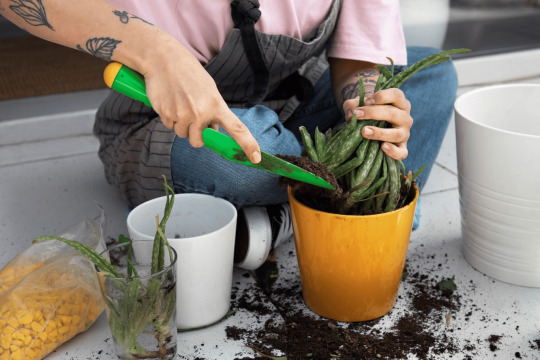
If you’ve been looking over at that plant that needs some love but are too scared to know how to transplant a plant, then look no further. Release Pots is here with all of your questions answered. Transplanting a potted plant can be daunting. While it may seem like a small task for some, when it’s your favorite plant, the pressure is on.
Having your home filled with houseplants is one of the great joys in life. The best part about having houseplants is you really can’t have too many. Who knew adding greenery to every room could be so much fun?
But it gets to a point where the plant starts slowing down in growth and isn’t looking green anymore but rather yellow and brown. These are some telltale signs to watch when deciding if your houseplant needs a new home.
Roots Growing Through The Existing Pot
Seeing those roots sticking out the bottom of the pot is a big sign that your plant needs a new home. Although you want your plant to grow to the restrictions of its current pot, you don’t want it to exceed this. When a plant becomes root bound, it will grow its roots right to the edges of the pot, with no more room to grow. Leaving your plant to become root bound can make for a tricky swap if you’re not using Release Pots.
Slower Growth
Unless it’s the middle of Winter, your houseplant shouldn’t be slowing down all that much in terms of growth. Slower growth without any reason behind it can be a sign of suffering without you even knowing it. This can be due to the roots being suffocated and not receiving the oxygen they need to ensure the plant is thriving.
Losing Leaves Or Yellowing Leaves
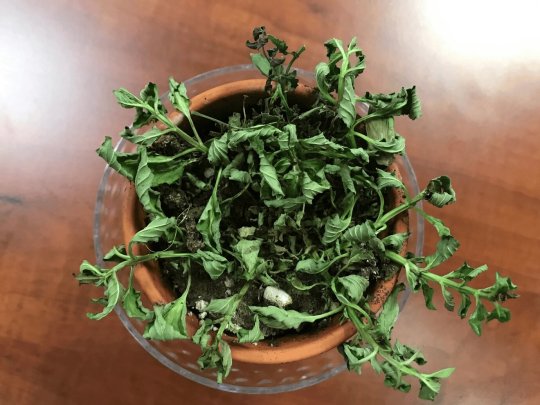
When your houseplant loses its leaves or the leaves start to turn yellow, while it’s a generalization this usually means there are issues with watering or the current pot it’s in is too small. Check your water situation and see what’s really going on in that soil. If the water isn’t affecting the plant, then it’s most likely the roots needing some more room. The roots are key to a healthy plant, so using pots like Release Pots is a great way to keep your houseplant happy and keep an eye on those roots.
Two Thirds Pot, One Third Plant
While this isn’t necessarily a sign, it’s definitely helpful when it comes to assessing each individual plant. Stick with the rule of thumb; you should have two thirds of pot to one-third plant. It needs to be repotted if you’ve got too much plant-to-pot ratio. But if you’ve not got enough pot for the little plant, you may need to size down. It’s a great way to keep the right proportions of a healthy houseplant.
When Is The Best Time To Transplant Plants
Before we get into the process of how to properly transplant a plant, we need to look at when is the best time to do so.
If your plant can hang out until Spring, then leave it until then. Springtime is the perfect time for transplanting. Not only is it when everything in nature is in full force, but it’s also the perfect temperature for plants. When you transplant a plant, you put it into shock. This is maximized even more so if you were to transplant during Winter. If you can’t wait until Spring to repot, then anytime during the warmer months will be your best bet.
How To: Transplant A Potted Houseplant, The Steps
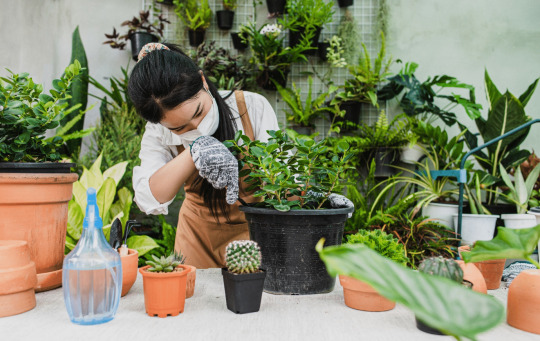
These are our broken-down steps of how to properly transplant a houseplant.
1. Identify The Problem
As we’ve mentioned in the list above, there are signs to look for when determining if a houseplant needs to be repotted or not. As an added note, this process is much easier to complete if the soil is dry. This doesn’t mean you need to skip months of watering. However, consider skipping its weekly water the week before your transplant.
2. Prep Your New Pot
If you’re using Release Pots, go ahead and easily set up your pot. If not, make sure you’ve got the desired pot ready to go. In your desired pot, fill the bottom inch or so with soil and a small amount of fertilizer. How much soil you need for each plant will depend on the pot size.
3. Remove Plant From Existing Pot
If you’re not using a Release Pot, this is where it could get tricky. But if you happen to be using a Release Pot, you’re in luck, as they make this step easy and quick. For those who are using a regular plastic pot, you’ll want to gently squeeze the side of the pot, loosening the roots. Roots should easily come away from the sides of the pot. Once you’ve loosened the soil, place your hand gently over the top of the soil, carefully holding the plant in place, and tip the plant upside down. The plant should fall out gently into your hand.
4. Put Into New Pot
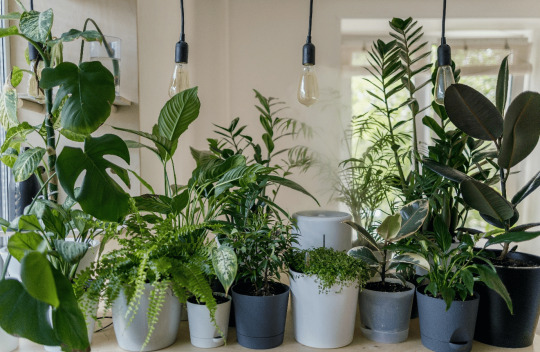
Once the plant is gently in your hand, this is where you can carefully place it into its new pot. When you complete this step, be sure to separate the roots gently, so they have room to grow. This can be done gently with a small hand rake, or with your hands working perfectly. Once you’ve placed the plant in its new pot, add some soil to fill in the gaps.
5. Water And Sunlight
Once you’re happy with how your new plant is looking in its new home, give it some much-needed water and sunlight. Your plant will go into temporary shock after being transplanted, so it’s time to give it all of the much-needed love and care.
Final Thoughts
Release Pots is a fantastic solution when transplanting pots and needing to keep plants healthy. Not only are you able to ensure the plant’s root ball is kept intact when repotting, but you’re also able to ensure correct drainage, keeping those roots and plant happy. So, if you’re wondering the best way to transplant a houseplant or how to transplant a plant, Release Pots is your ideal solution
Original Source: https://releasepots.com/how-to-properly-transplant-a-potted-houseplant/
0 notes
Text


Haworthia emelyae var. comptoniana
#shes due for a repotting#most of my succulents are at this point tbh#haworthia#haworthia emelyae var. comptoniana#haworthia emelyae#succulent#succulents#succulentblr#plants#plant#plantblr#horticulture#houseplants#mine
30 notes
·
View notes
Text

The ZZ plant was well overdue for a repot so decided I'd do it before tree pruning today. Shouldn't take that long right?
Oh darling

How greatly I underestimated what I was getting myself into. It took me several hours to untangle and tickle apart the roots from themselves before I could even think of repotting. I wish I took a photo after I got the roots free but I got interrupted during the repotting process due to having to help with a lamb and ended up forgetting.
The rootballs were so huge that I decided to instead divide apart some of the tubers where I could and repot them into several pots instead of a single giant pot.
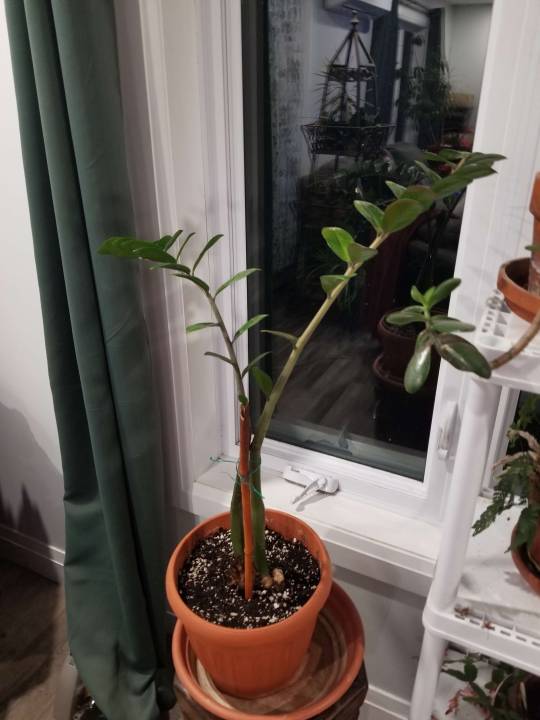
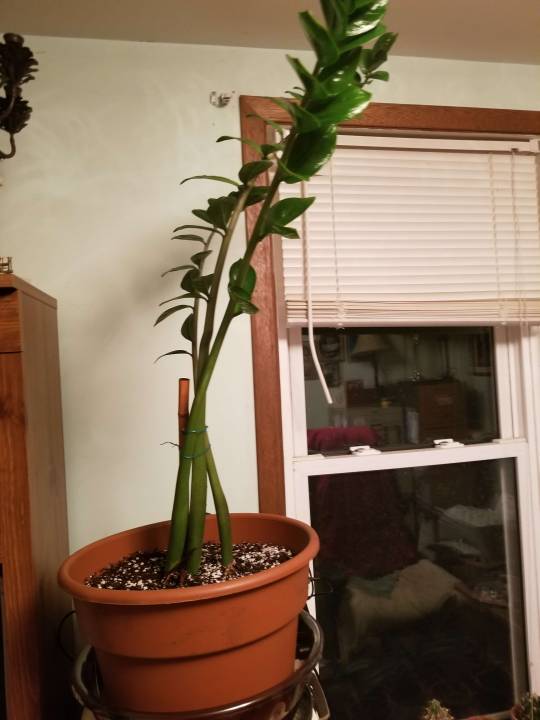

one chunk of tuber got separated from the greenery but still had an eye so I threw it into a tiny pot to see what happens as well.

Two okay-ish stems got broken off accidentally so I decided to throw them in water to try rooting more up- not that I need more ZZ plants when one specimen has already become 3
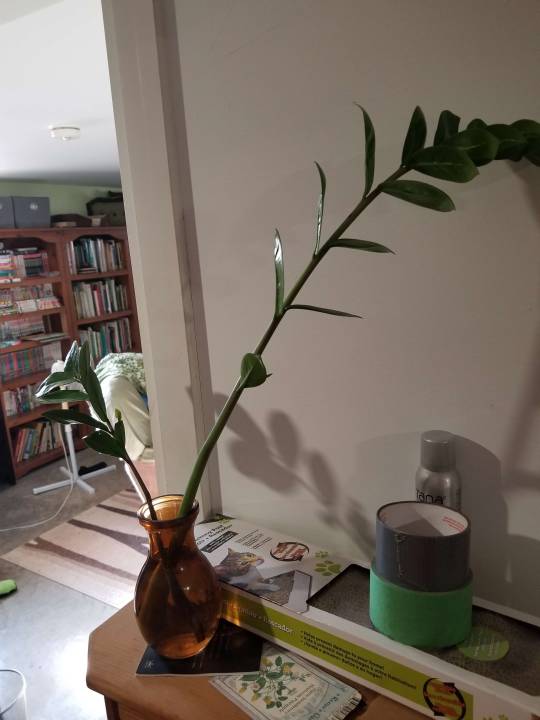
While tree pruning outside is taking main priority I've been wanting to work on cleaning repotting up more of the houseplants so may try to juggle a little of each done each day. Will try to report for whichever houseplants get done next.
#plantblr#gardeners of tumblr#gardeners on tumblr#my post#my plants#zz plant#houseplant#indoor plant#propagation#repotting#division#Zamioculcas zamiifolia#Zamioculcas#Z. zamiifolia
24 notes
·
View notes
Text

Tradescantia Nanouk update!
#repotted my two little plants about a month ago and now she’s a beast!#tradescantia nanouk#tradescantia#houseplants#houseplantblr#plants#my plants#also this was so freaking heavy to hold with one hand 😂
13 notes
·
View notes
Text

Open pollinated Aloe hybrid I grew from seed, repotted today
#succulents#garden#nature#plants#aloe plant#aloe#plant collector#cactus#houseplants#seedlings#grown from seed#repotting#succulent propagation
29 notes
·
View notes
Text
the internet had me worried about over watering my peace lily and I've never had a plant before so I didn't know how dry soil should be to be considered "dry" and long story short she was not in good shape

turned out it desperately needed to be repotted

my friend told me to put it in a container of water,

and it perked up considerably!!
I went and got a clay pot (and drainage saucer) and potting mix and when I came back I loosened the root ball as best I could and repotted the plant:
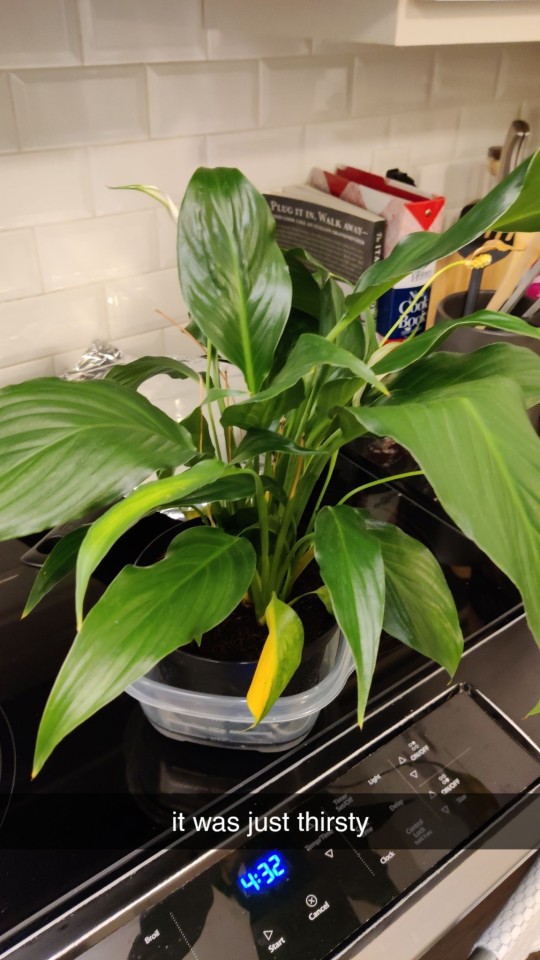

#this was stressful but a lot of fun and very rewarding#insane how dramatic these plants are#it's like when a cat is a little hungry#peace lily#houseplants#repotting#i also got a snake plant while i was out
23 notes
·
View notes
Text
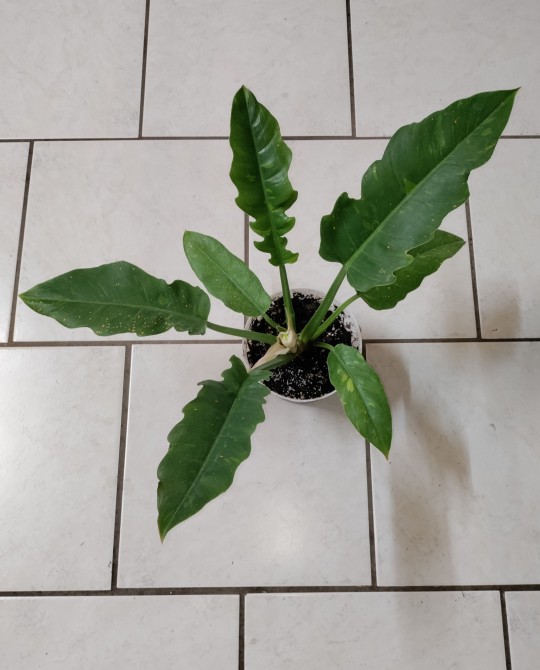

Philodendron Ring O' Fire 🧡
6/16/23 - 9/25/23
#plantblr#plant parent#cottageblr#philodendron#philodendron ring o fire#plants#gardening#houseplants#dark cottagecore#house plants#house plant#indoor plants#plant life#plant#indoor garden#repotting#repot#plant update#new growth#new leaf#long time no post
17 notes
·
View notes
Text




Repotting Syngonium NEON (Aug. 2024)
3 notes
·
View notes
Text


morning from the ridgetop
#logbook#i am sooooo tired. woke up at 4am jolted awake by anightmare abt WORKof all thingz. boooo.#talked plants in a server fell back asleep. finally getting up to it having rained. thank you nature. my plants were dying.#i need to clean up stuff out here this weekend. probably toss or even repot. im prepping for doing garden stuff soooon.#and i need to take care of houseplants. i also plan to finally cook up here this weekend. .#so many things. ive had the house to myself since thurs and will til thurs again im p sure. .at least til tues.#its nice up here. im enjoying the quiet and comfort.#working the other job starting today too. a lil nervous. . . .but it'll be ok. i'll have fun with it. i'll try.
3 notes
·
View notes
Text
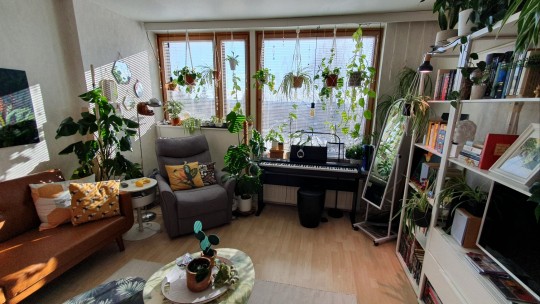

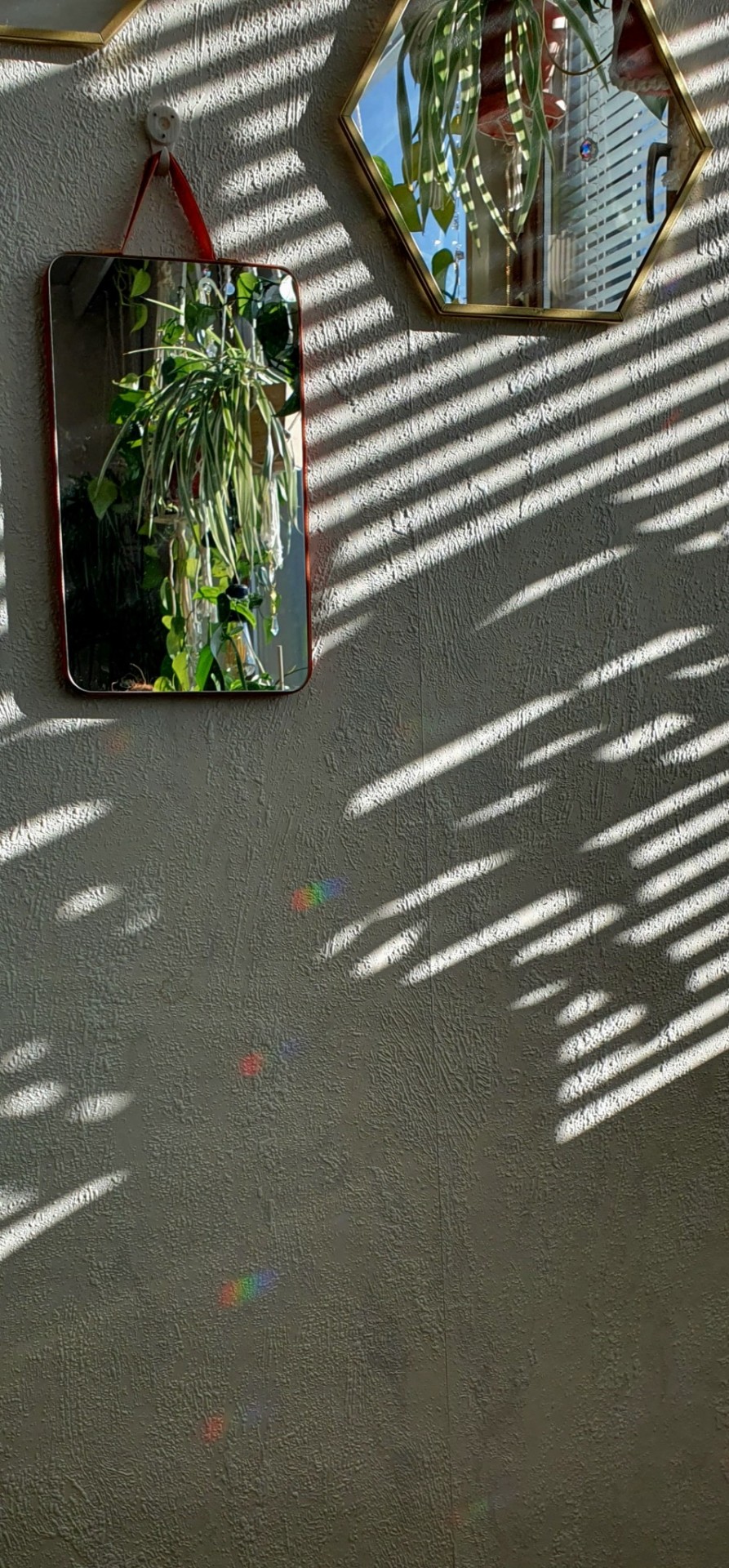

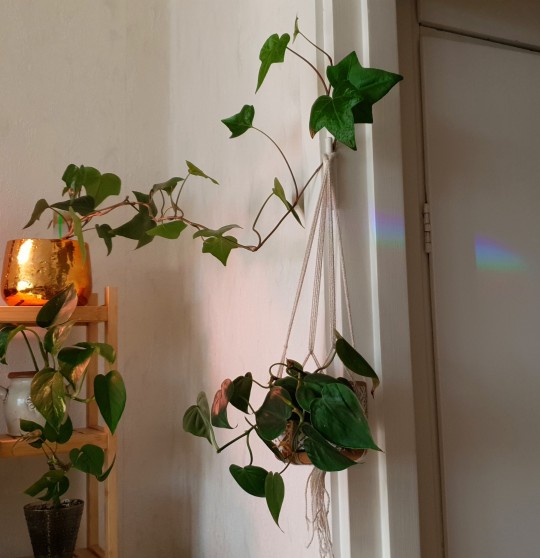
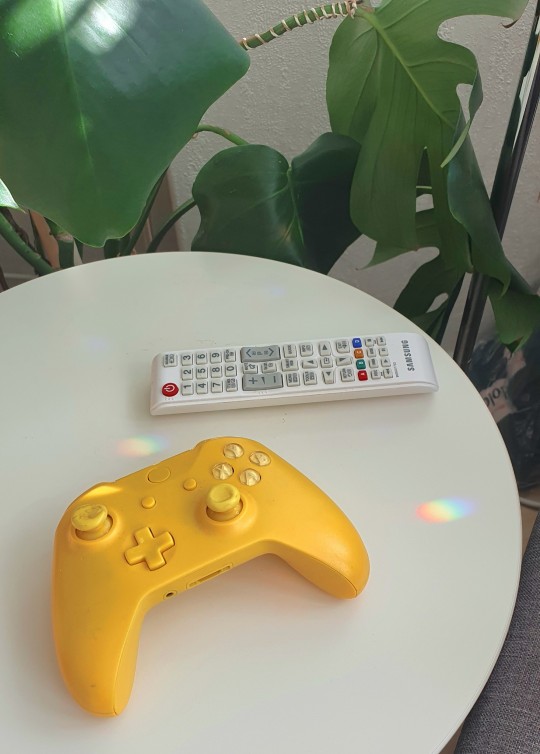

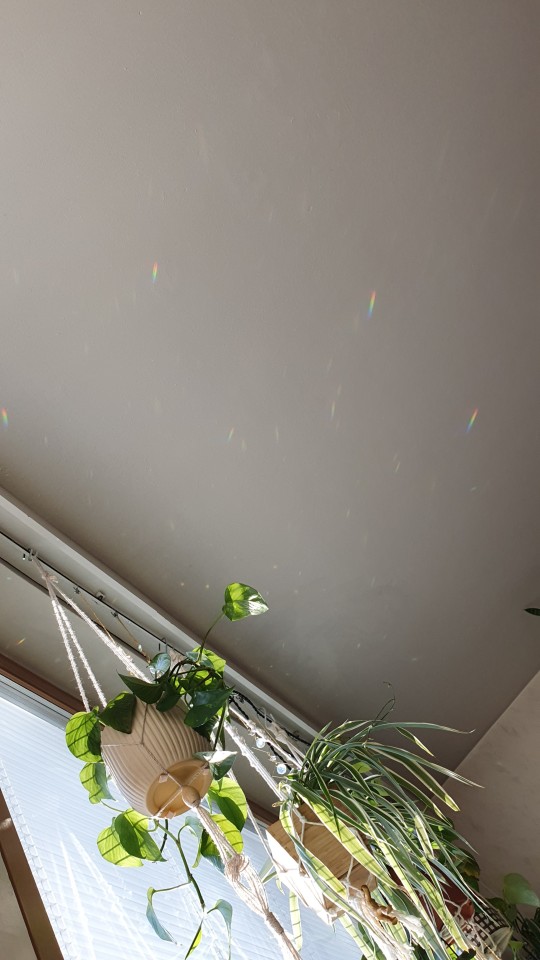

hello, it's my flat, my plants, and my ever-evolving rainbow exhibition
#excuse the bin bag in the background of the cache pot pic i was repotting when i noticed the rainbow there#i couldn't let the soil get all over the floor#lol#rainbows#interior#decor#plants#houseplants#my place#mine#i lowkey hate the recliner but it's comfy so 🤷#prisms#internal monologue#also julie hi here they are!#the pictures!#i cleaned up!#oh also! nobody judge that droopy monstera she's having a hard time ok#she didn't like her soil changed#mabel is a bit of a diva
45 notes
·
View notes
Text
Tips On How to Move a Potted Plant
Physically Moving the Plant
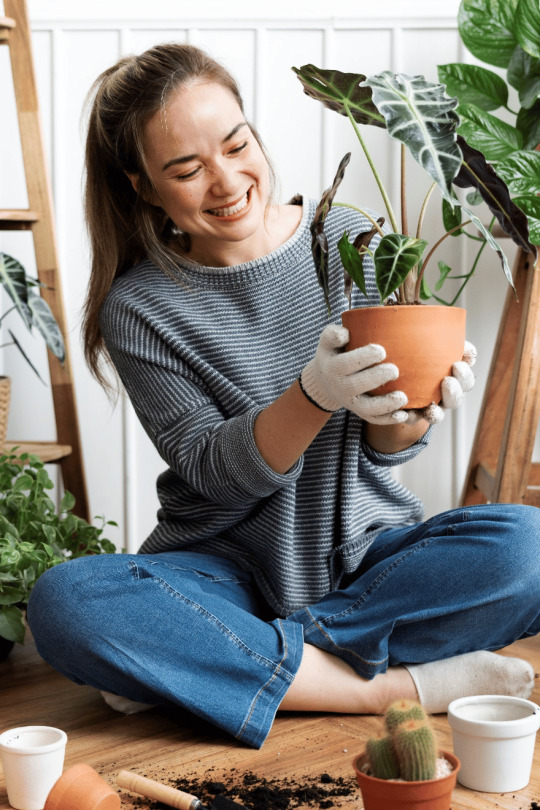
Drainage holes in pots are crucial to the plant’s health. However, most growers ask one question: are pots without drainage holes bad? This article will show why they aren’t bad when used on several plants such as pothos. But first, what are drainage holes?
Check Plant Hydration
The first thing you need to do before moving your plant is to determine whether it needs water by checking the soil. If it is dry, add water to the pot and let it soak in. Do not overwater as you need to provide the soil time to soak up the water before adding more.
Secondly, you need to check your plant’s leaves for signs of dehydration, such as wilting or dryness on leaves and stems. If there are any visible signs of dehydration, give your plant water before moving it so that it does not lose too much moisture during transport.
Release Pots use less water than standard pots. They are designed to drain more slowly, allowing more water to be absorbed by the roots. At the same time, it prevents stagnant water by using patented angled bottoms to allow for drainage.
Test Plant Weight
You must also be sure to test how heavy the plant is before you move it. Potted plants can vary in weight based on their size and composition, so it is important to know if yours is too cumbersome for you to move alone. It might also affect how intact the plant will be once it reaches its new spot.
Using a Release Pot in this process will provide a sense of ease when transferring plants into the ground or transferring a larger pot, as it saves you precious time and lowers your labor costs. They have large and manageable carry handles for smaller plants so that you will never have a pot slip out of your hand again.
If the plant does feel too heavy, consider enlisting the help of a friend or family member to assist you. If the pot is too big for you to transport safely by yourself, consider breaking it into smaller pieces first, which will also make the transporting process easier.
Physically Moving the Plant

Once you have assessed your plants before the move, the next step is physically transferring the plants from one location to another. Knowing how to move a potted plant correctly is vital to keeping it secure, healthy, and intact in its new home.
Lifting the Plant
If you are transferring a relatively small plant to a new pot, grasp the stem in one hand while holding the stem close to the top of the soil with your other. Lift carefully while keeping your hands close together for better control and avoid spilling soil from your potted plant’s container.
To lift plants in a large container, place one hand under the rim of the container while you cup your other hand over the top of the soil. With your hands positioned this way, you can easily move the pot without damaging its roots or spilling dirt all over your floor.
As an even better solution, Release Pots offer large and easy-to-carry handles and are available in multiple sizes so that the plant, no matter what size, is easier to carry and transport from one place to another.
Transporting the Plant
If you are driving to a new location, there are strategic ways to transport your plant safely and securely. Place your plant in a box or use newspaper or packing material to keep the pot from sliding around during transport. Make sure to place your plant on a level surface. If it is an uneven surface, you can use a towel to protect seats or floors from getting wet or dirty should the plants or soil spill over.
It is best to place your plant in your vehicle at the last possible moment to prevent it from being exposed to drastically different temperatures and it can still have good airflow.
Securing the Plant in a New Spot
You can use a dolly or wagon to transport a plant if it is too heavy. This will protect the roots from being squished and allow you more control over how much weight is distributed across them. It also prevents the plant from tipping over during transit; if your pot has drainage holes on its bottom, then water could spill out onto whatever surface is below it – which is also not good!
Release Pots are new and versatile plant containers that are the only guaranteed way to safely transplant your plants or trees into the ground if moved outside or into a new pot. Have a look here for how easy it is to place in fresh soil.
Additional Points for How to Move a Potted Plant

Potted plants can be moved in a variety of ways, so here are a few more basic tips that will help ensure your plant stays happy and healthy during the process:
Move the plant while it’s still healthy and hydrated. It will recover faster if there aren’t any leaves damaged or bruised on its way to its new home.
Make sure you keep an eye out for bugs like mites or aphids, which are tiny insects that suck sap from leaves. If these critters make their way into your potted plant, try using products made especially for getting rid of them, like insecticidal soap spray or insecticidal bags of dust from your local hardware store. Or you could also call an expert gardener if you need help with handling infestations.
You may also want to cut off any dead leaves with water before moving; this helps the plant focus its efforts appropriately and also reduce the chances of spreading disease between pots.
Account For Plant Stress After Move
Replanting as soon as possible will reduce further stress on the plant so it is somewhat vital that you know how to move a potted plant fairly quickly. When you move a potted plant, the process can be stressful for both the plant and its new environment. Here’s why:
Moving plants essentially take them out of their natural environment and place them in an unfamiliar one. Plants are used to having certain conditions that they need to survive – including soil, light, temperature, and air circulation – and if these conditions are not met when they are moved, they might die.
Some plants may also need time to adjust to their new environment. In reaction to the move, they might lose their leaves or wilt, but it is normally only a temporary defensive reaction that should pass after you and the plant have settled in.
If you don’t move your plants soon after transplanting them into new containers or into completely different soil, they may become ill or die due to a lack of water or nutrients, so hydration is also another key factor to their survival.
Some plants just do not like being uprooted from their original environment; others will thrive no matter where you put them! Either way, it’s always good practice to move a plant with care. It not only helps reduce strain on the plant but because there is less chance of damaging roots, if done properly, before putting into a new potting mix with added fertilizer.
Conclusion
Whether you’re transplanting to a bigger pot, relocating, or just redecorating, it’s important that you take extra care when transporting your plant and know the relevant steps to move a potted plant. Potted plants can be heavy and awkward to carry, but there are many ways to make the process go smoother. And with the right tools and tips, it can be a breeze! With the simple steps that have been outlined in this article, you will be able to move any plant with ease. If you would like to make your life transplanting and moving your plants, then a Release Pot is your answer! Check out our array of pots and get repotting today!
Original Source:
https://releasepots.com/tips-on-how-to-move-a-potted-plant/
0 notes
Text
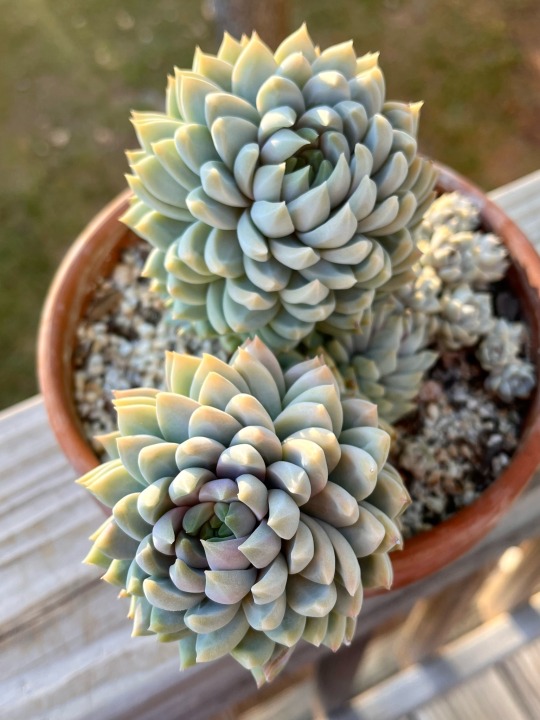
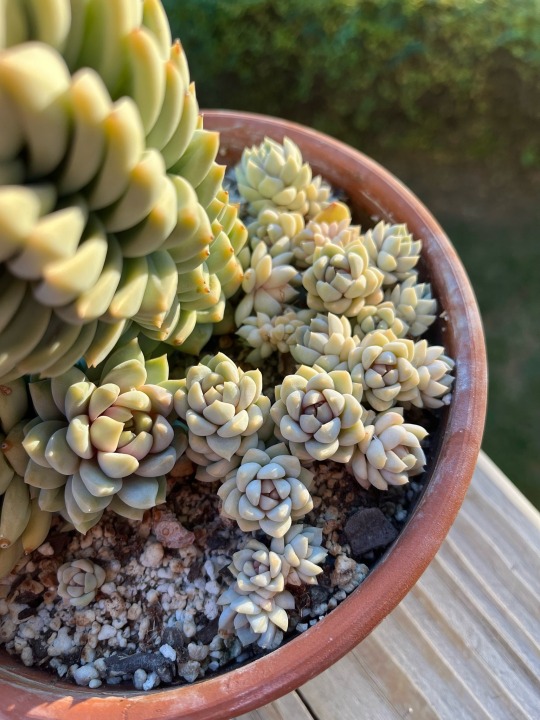
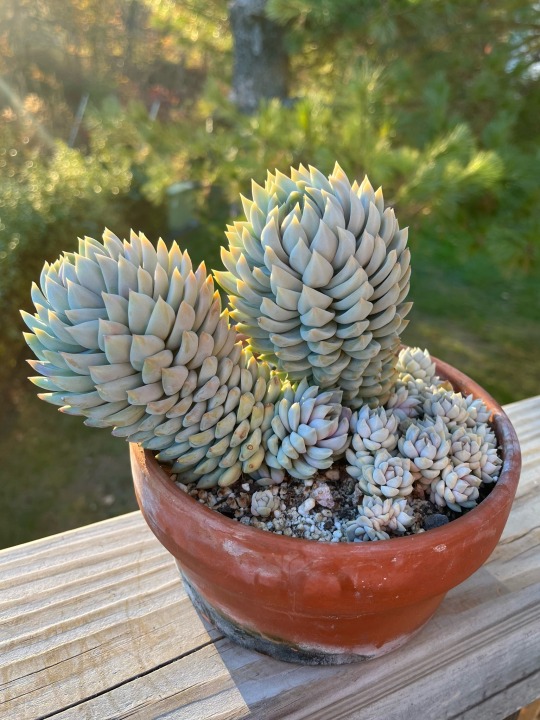
xSedeveria 'Lilac Mist'
#very overdue for a repotting lol its so rootbound#and we're not gonna talk about the dead algae on the bottom of the pot#the lil babies are all leaf props :)#xsedeveria#sedeveria#sedeveria lilac mist#sedum#echeveria#succulent#succulents#plant#plants#hybrid succulent#houseplants#succulentblr#plantblr#botany#horticulture#mine#propagation#leaf propagation#succulent propagation
101 notes
·
View notes
Text

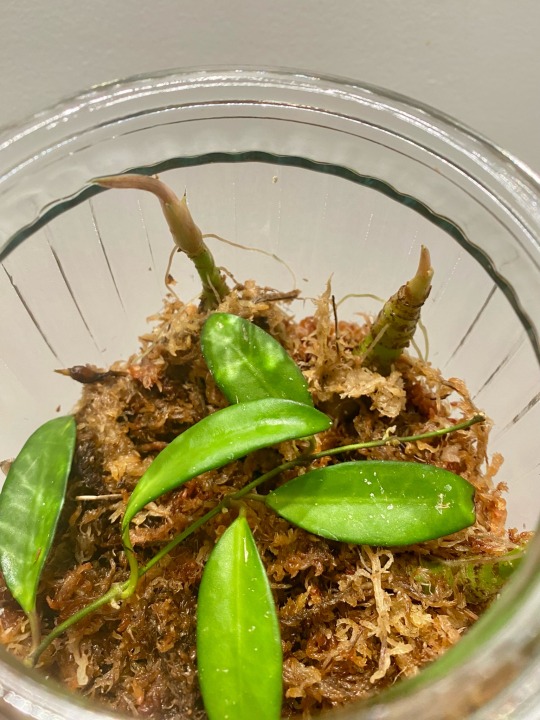
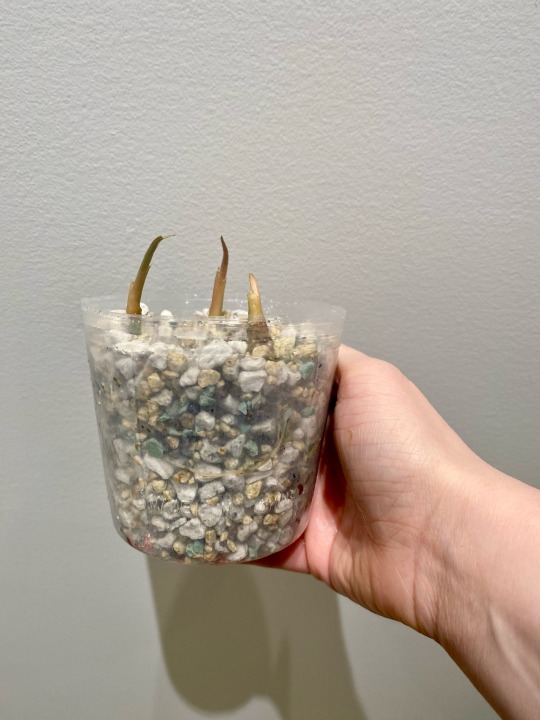

Trying some alocasias in semi-hydro!
These are the 3 alocasia poly corms I shared from my prop jar about a month ago. Looking through the side of the jar all of the corms appear to have developed decent roots and one of them is also hitting the top of the jar.
The parent plant these corms come from is currently not a very happy camper. It’s just existing in a leafless state of dormancy. So I figured: why not throw these ones into semi hydro and see what happens.
#alocasia#plantblr#plants#houseplants#plant blog#semi hydro#repotting#pon#indoor plants#houseplant#tropical plants#alocasia polly#house plants#my plants#plantlife#potted plants
18 notes
·
View notes
Text
Back in my houseplants era 😌 (bought a peace lily)
#i basically used that flowchart thing that suggests easy houseplants for accidental plantkillers as a guide#they had an aloe vera but i think i’m allergic to aloe vera so i didn’t buy it#they also had jade plants but i didn’t realise they were jade plants so i didn’t buy one and i feel stuuuuupid#they had a lot of succulents but i don’t do well with succulents. i don’t get that much sun at my house#occasional bright indirect sunlight is like the best i can do#i might still buy a jade plant and a snake plant bc they look relatively easy. but i need to repot the peace lily first#i bought a really nice ceramic pot with it and it’s kinda big so i didn’t think it’d need repotting for a while#but apparently they grow super fast so i think i’ll just give the peace lily like a week to acclimate to being in the kitchen#and Then repot it#personal
4 notes
·
View notes
Text
do The Youths still sprout avocado plants? feels like avocados are way more popular than in the '90s yet i never see an avocado pit toothpicked over a jam jar anymore
#that's a free houseplant#when I was growing up my parents had an avocado tree in the house they'd grown from a pit and repotted several times#it eventually got taller than the ceiling and started bending over
2 notes
·
View notes
Text

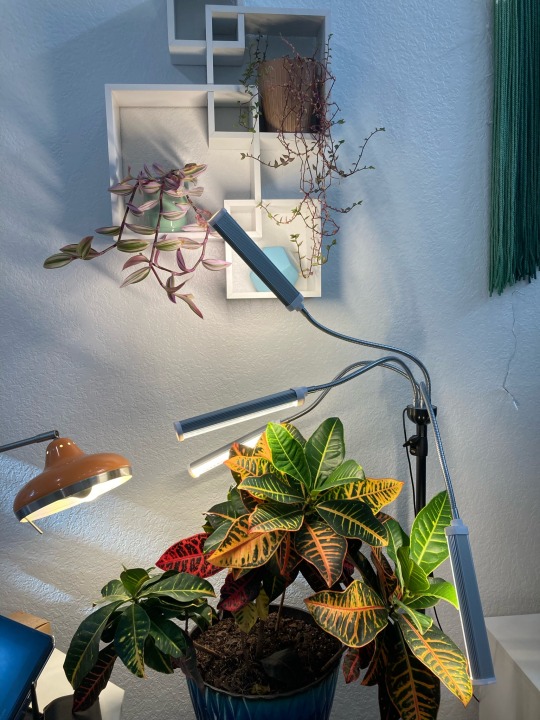
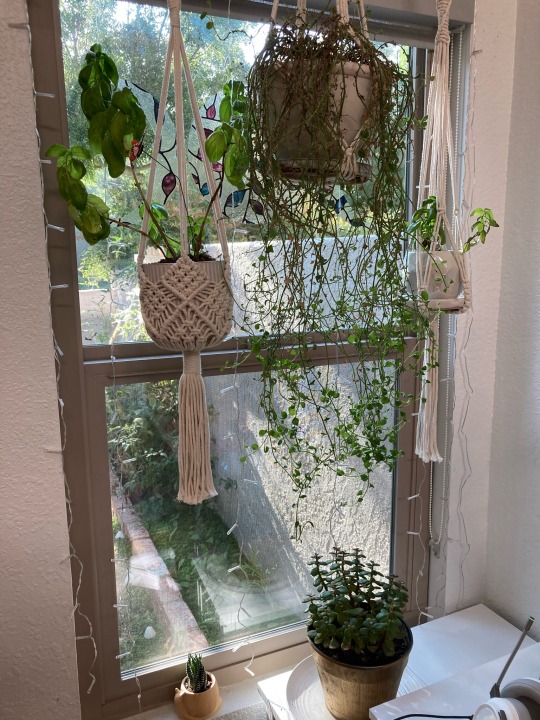

plant update :)
#picture journal#i love plant#this isn’t all of them but these are the most photogenic areas#i have 20 houseplants altogether currently#and a front garden! but that’s ugly rn so no pics of it yet#anyways i just repotted the rescue fiddle leaf#i hope it likes its new home!#and doesn’t die from shock ghhfhdjd
19 notes
·
View notes